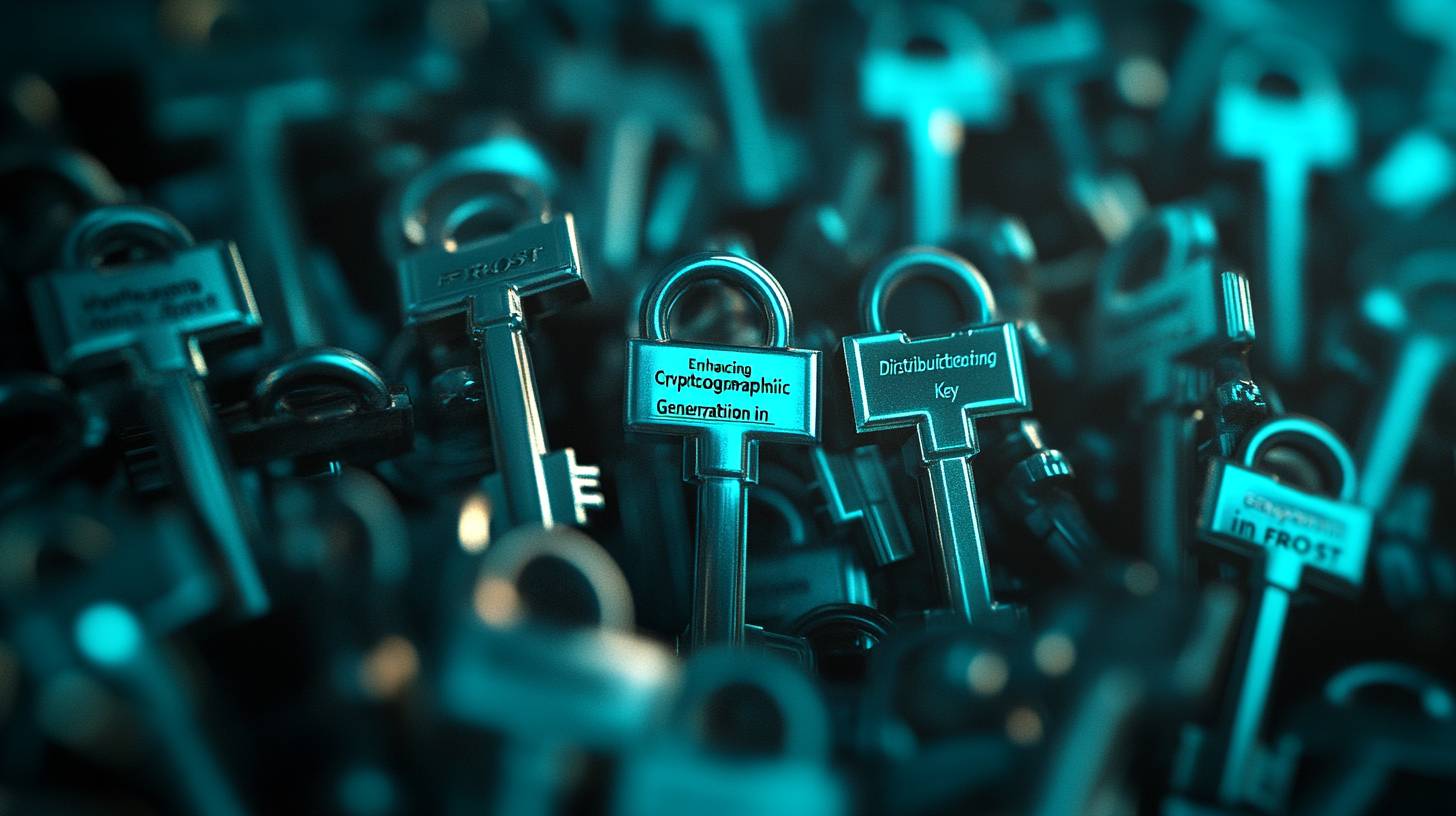
grasping multisig and threshold signatures in bitcoin
To tackle these challenges, the introduction of ChillDKG presents an encouraging solution. ChillDKG is an independent DKG protocol tailored for FROST, offering a ready-to-use framework that streamlines the implementation process. It encompasses secure communications and consensus mechanisms within the protocol, providing a user-friendly API that hides the underlying complexity. This design decision makes ChillDKG suitable for practical applications, requiring merely that each signer consents to the set of co-signers identified by their public keys.
Despite MuSig2’s momentum within the Bitcoin community, FROST hasn’t achieved the same level of popularity. This is in spite of various FROST implementations, including ZF FROST by the Zcash Foundation, secp256kfun by Lloyd Fournier, and a trial implementation in libsecp256k1-zkp by Jesse Posner and Blockstream Research. An IETF specification for FROST, RFC 9591, also exists, although it is incompatible with Bitcoin due to Taproot adjustments and x-only public keys. A plausible reason behind FROST’s slower uptake is the intricacy of its key generation process compared to MuSig2.
Cryptographic protocols like MuSig, MuSig-DN, and MuSig2 have emerged for multi-signatures, whereas FROST, introduced by Komlo and Goldberg, is tailored for threshold signatures. These protocols are not merely about enhancing security; they also focus on minimizing transaction expenses and bolstering the confidentiality of multisig wallets. By amalgamating multiple signatures into one, these protocols enable transactions to resemble standard single-signature transactions, thereby enhancing confidentiality.
Notably, MuSig2 and FROST permit Bitcoin users to manage a multisig wallet at the same transaction cost as a typical single-signature wallet. This represents a considerable benefit, particularly for systems with numerous signers and frequent transactions, as seen in federated sidechains like Liquid or Fedimint. Traditional multisig transactions leave a distinct imprint on the blockchain, making them readily identifiable. Conversely, wallets utilizing FROST are indistinguishable from regular single-signature wallets, offering a significant boost in privacy.
obstacles and remedies for implementing frost in bitcoin
ChillDKG’s design aims for broad applicability, accommodating scenarios from single-owner setups to multi-owner arrangements across various locations. It also simplifies backup processes, allowing users to recover their wallets using only the device seed and public data, without needing to protect secrets from other signers. This feature boosts security by ensuring that public backup data does not compromise the secret signing key, and it serves as a safety net for users who misplace their backup, as they can request it from another honest signer.
Source: bitcoinmagazine.com
The challenge of implementing a secure agreement mechanism is a notable obstacle. The IETF specification for FROST does not address DKG, delegating it to the library user’s discretion. This gap places a substantial burden on developers, who must navigate a variety of agreement protocols, each with different security and reliability guarantees. The absence of clear instructions on which protocol to select can result in confusion and potential security risks.
Multisig, short for multi-signature, is a familiar notion within the Bitcoin ecosystem. It pertains to transactions that demand consent from several parties before they can be carried out. This practice is particularly advantageous for boosting security and ensuring that no single entity has absolute control over the assets. Within the multisig framework, we distinguish between “n-of-n” multi-signatures, where each of the n involved entities must approve the transaction, and “t-of-n” threshold signatures, where only a selected number t of participants are needed for authorization.
In a trusted key generation arrangement, a “trusted dealer” is tasked with creating the key and distributing key shares to the signers. However, this method establishes a single point of failure. If the dealer is compromised, the entire FROST wallet faces jeopardy. This vulnerability poses a significant concern for users who emphasize security and decentralization.
Conversely, distributed key generation removes the necessity for a trusted dealer by engaging all members in an interactive key generation “ceremony” prior to commencing signing. While this method enhances security by eliminating the single point of failure, it also introduces its own challenges. DKG demands secure communication channels between participants to convey secret shares and a robust consensus mechanism to ensure all parties agree on the produced threshold public key and verify that no mistakes occurred during the process.
As of now, the ChillDKG BIP is in draft format, with feedback being sought on its design and implementation specifics. Although the specification is largely complete, it currently lacks test vectors, and additional features such as “identifiable aborts” are under consideration. Once finalized, ChillDKG, along with a BIP for FROST signing, will facilitate the complete implementation of the FROST protocol, paving the way for its adoption in Bitcoin production contexts.
Implementing FROST in Bitcoin introduces a distinct set of challenges, mainly due to its complex key generation process. The FROST architecture is composed of two primary elements: key generation and signing. While the signing aspect is relatively straightforward and akin to MuSig2, the key generation stage presents complexities. This stage can be conducted in two manners: trusted key generation or distributed key generation (DKG).

